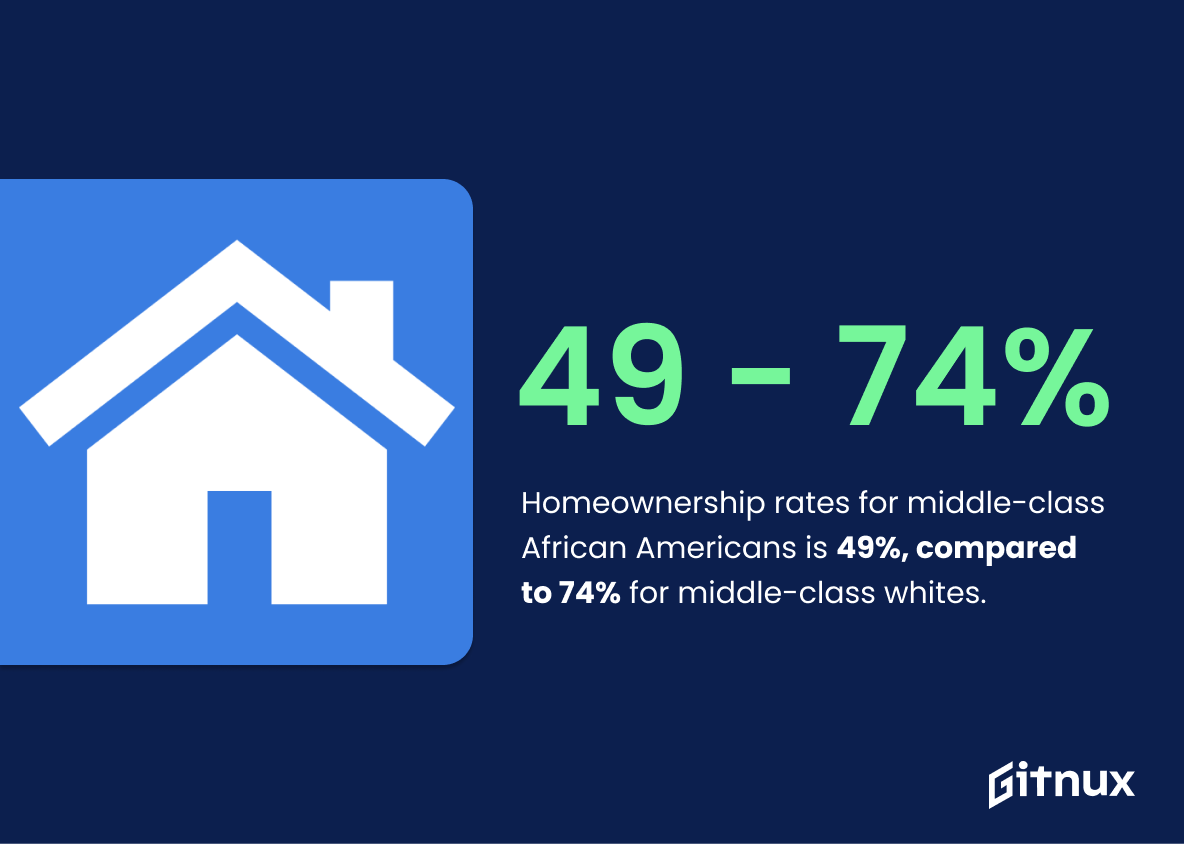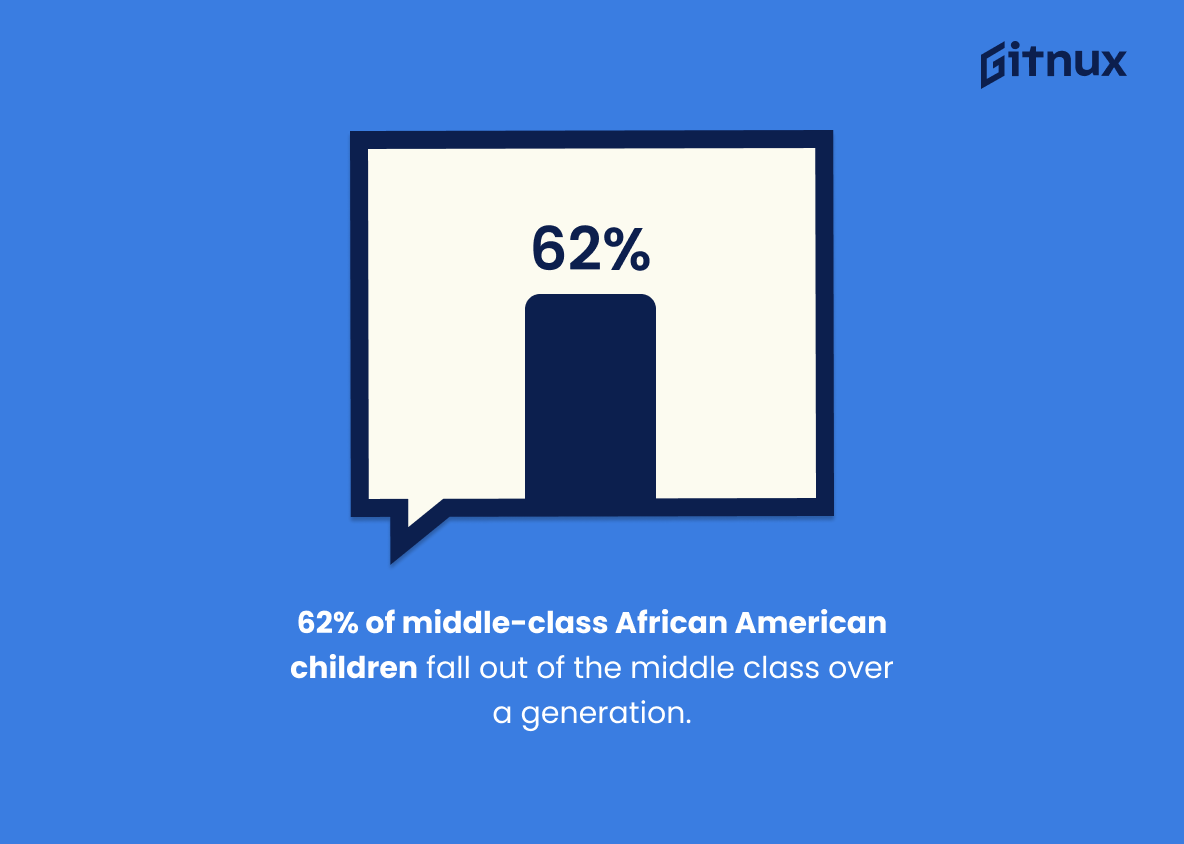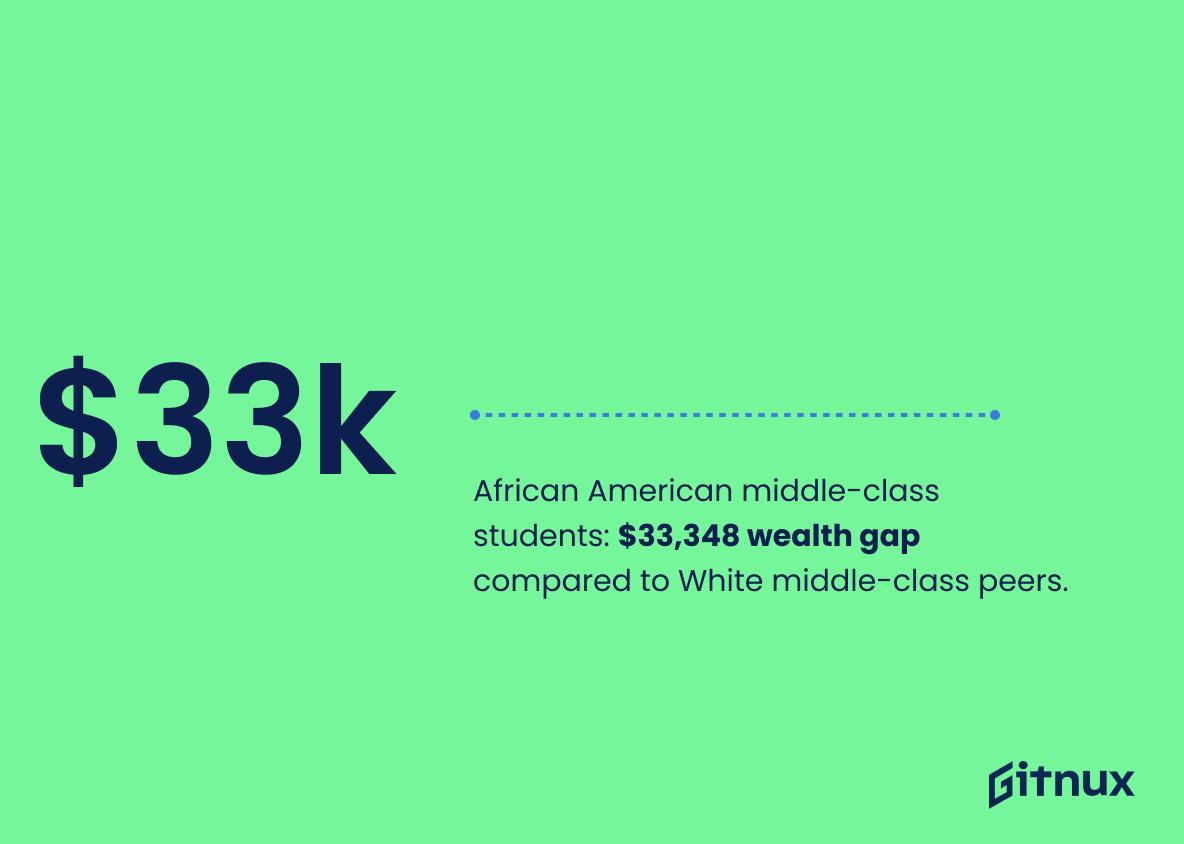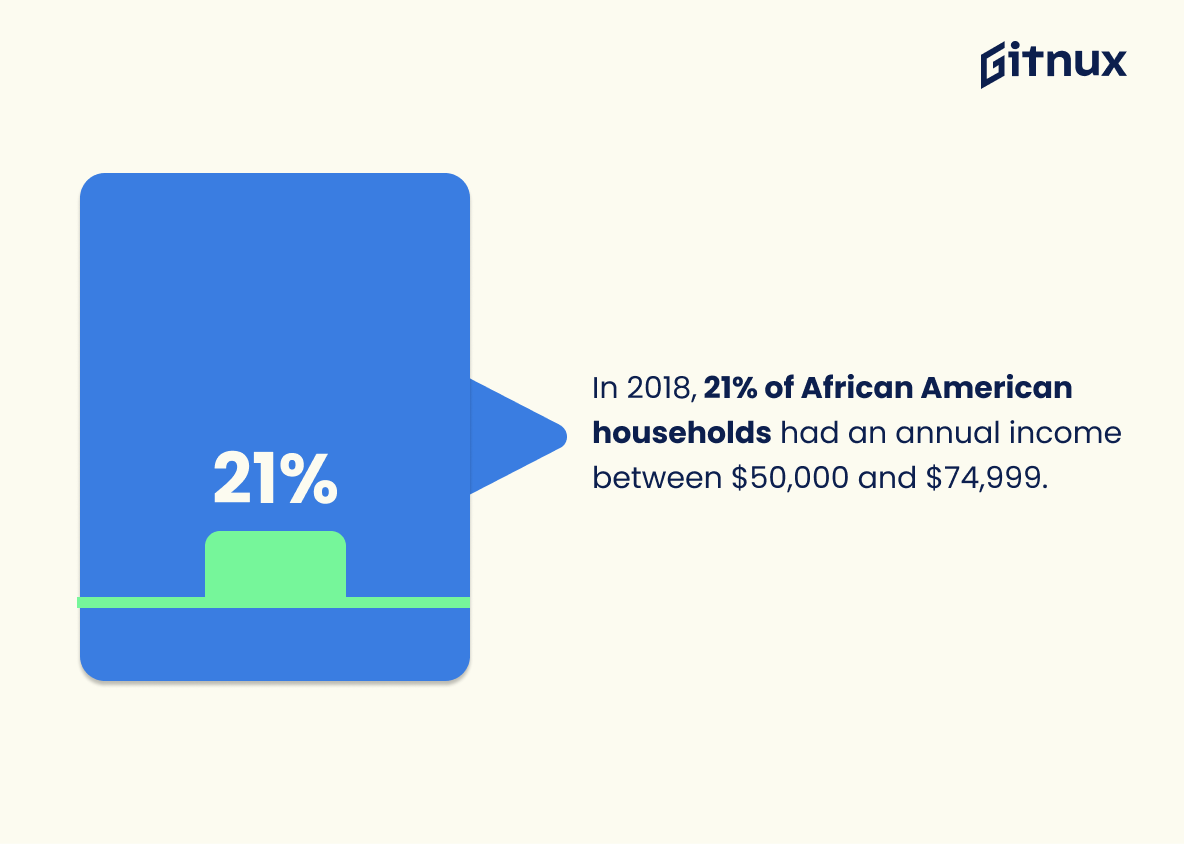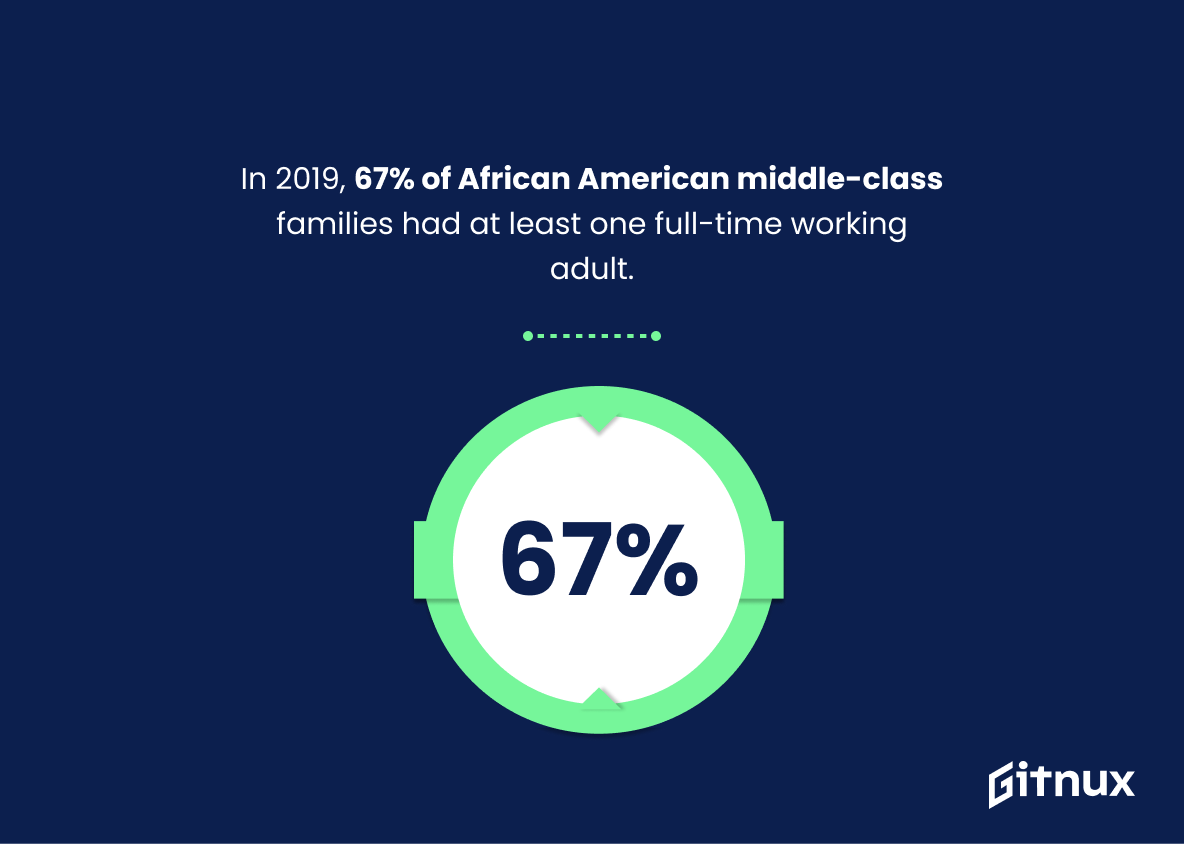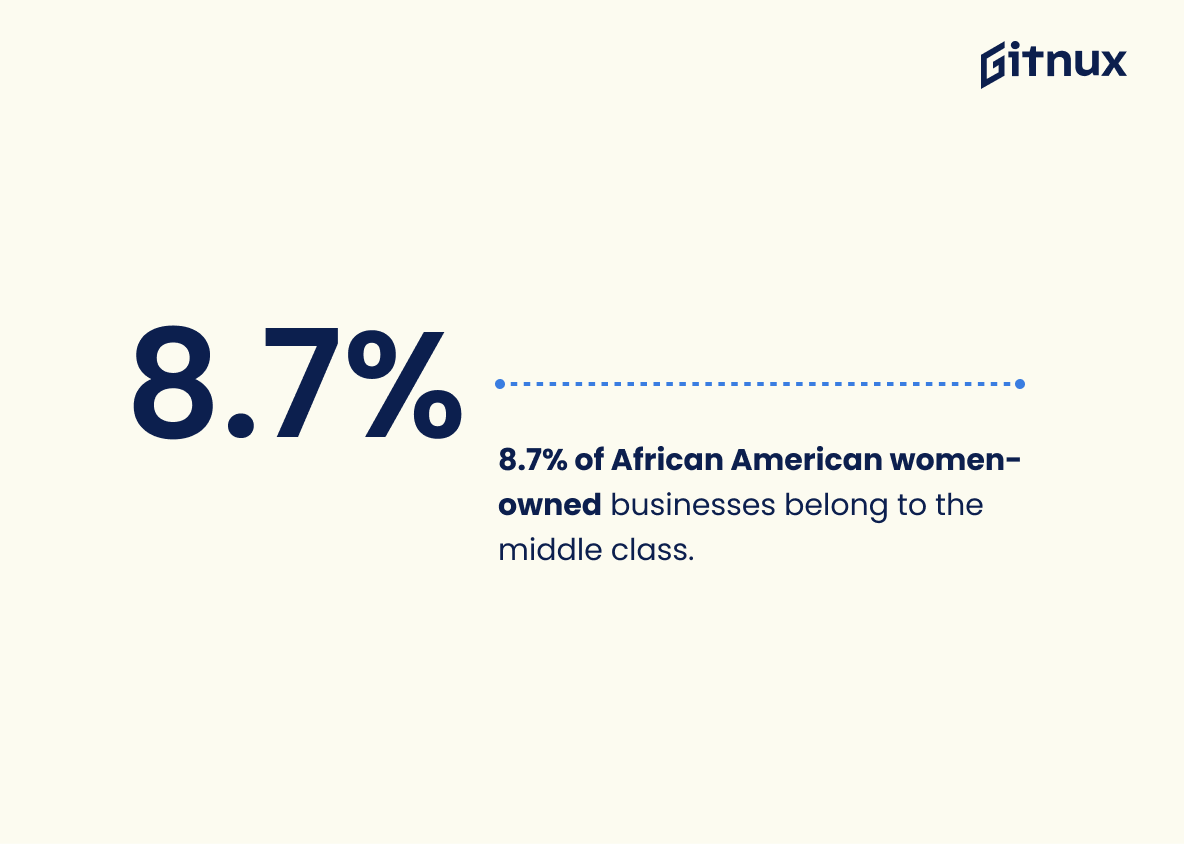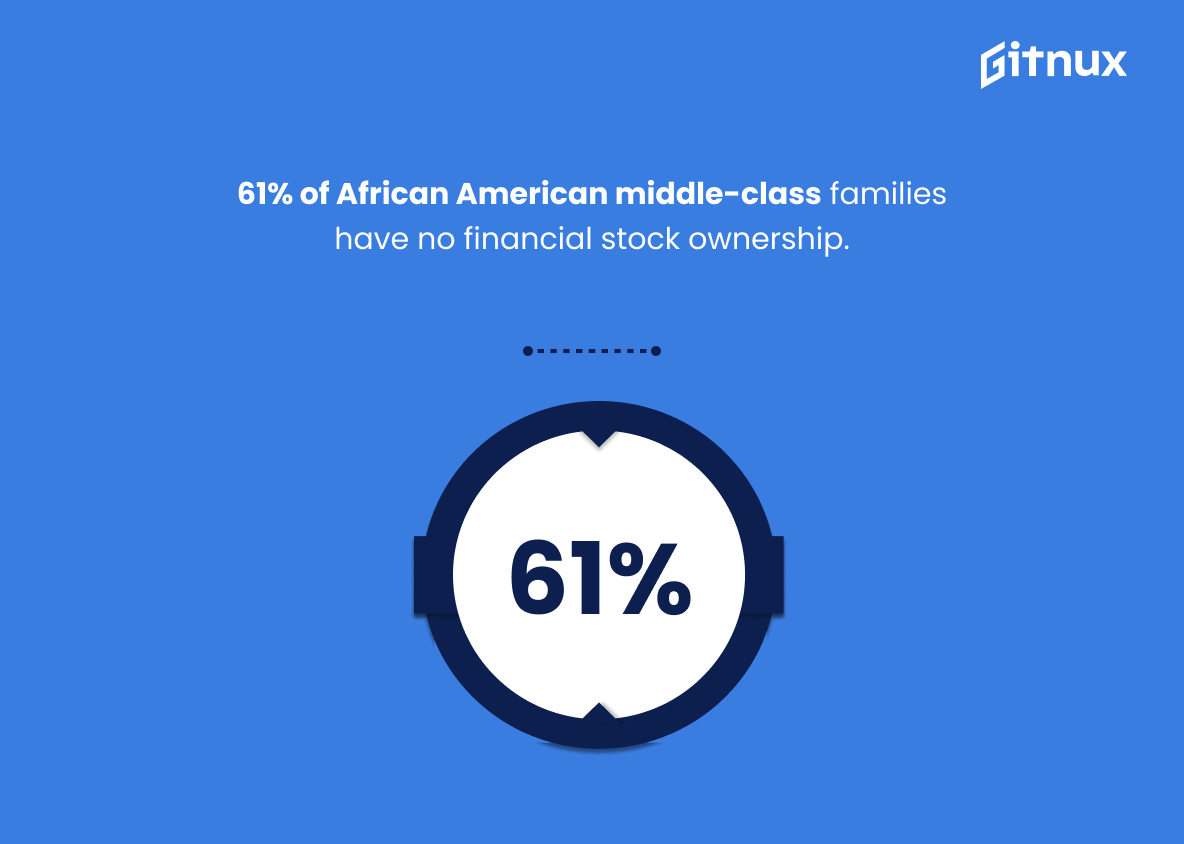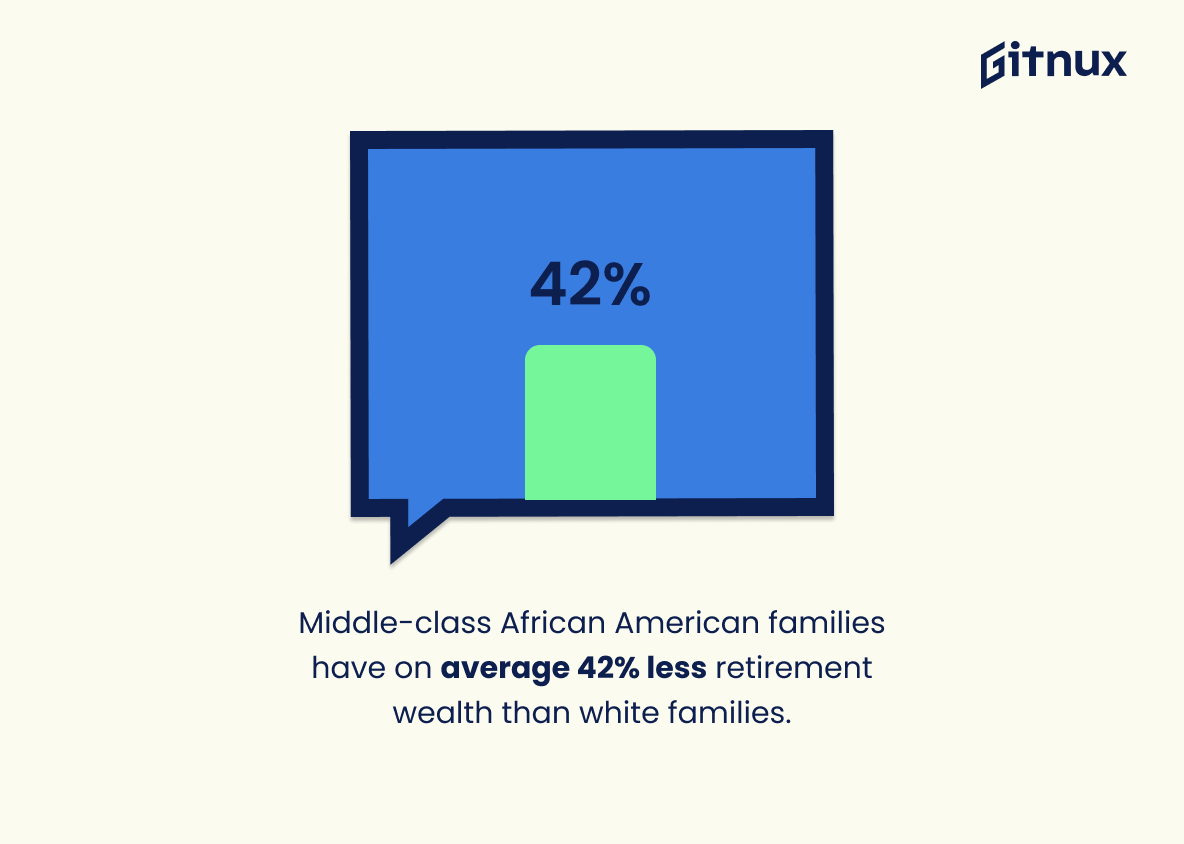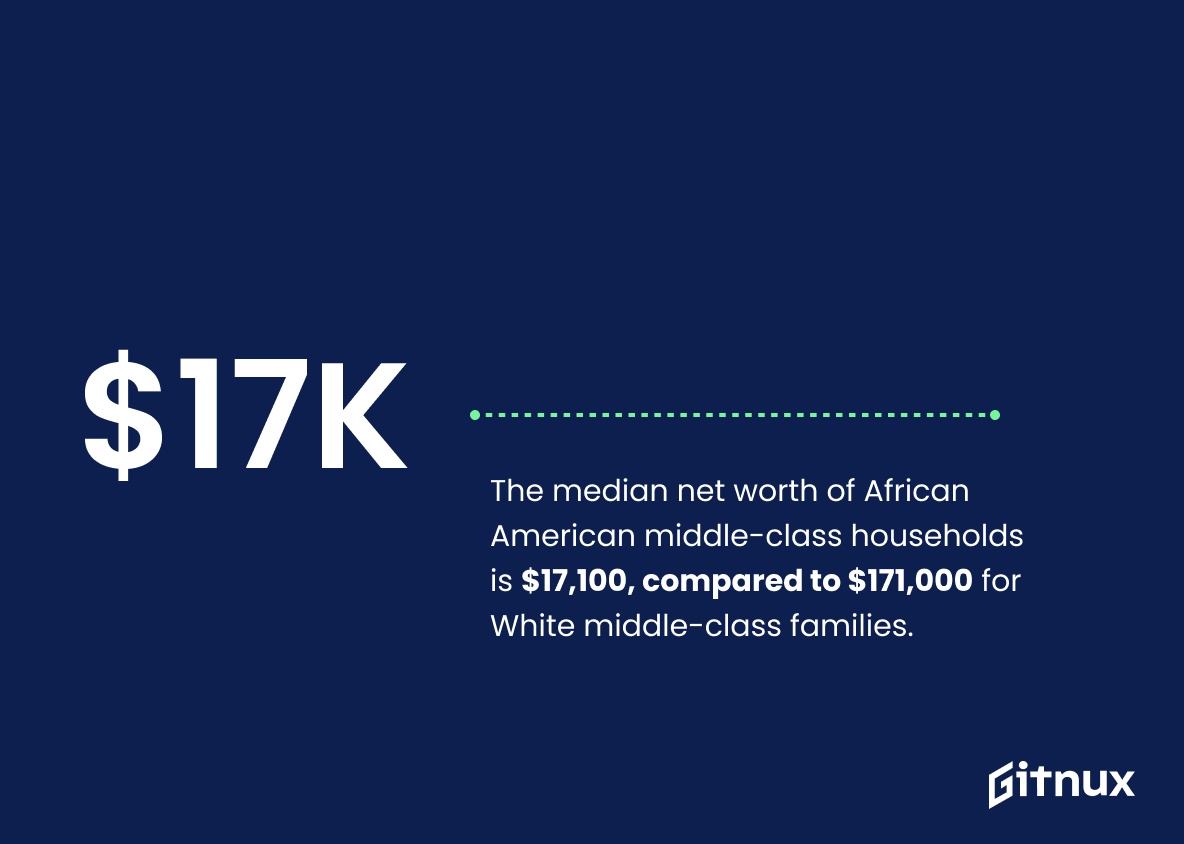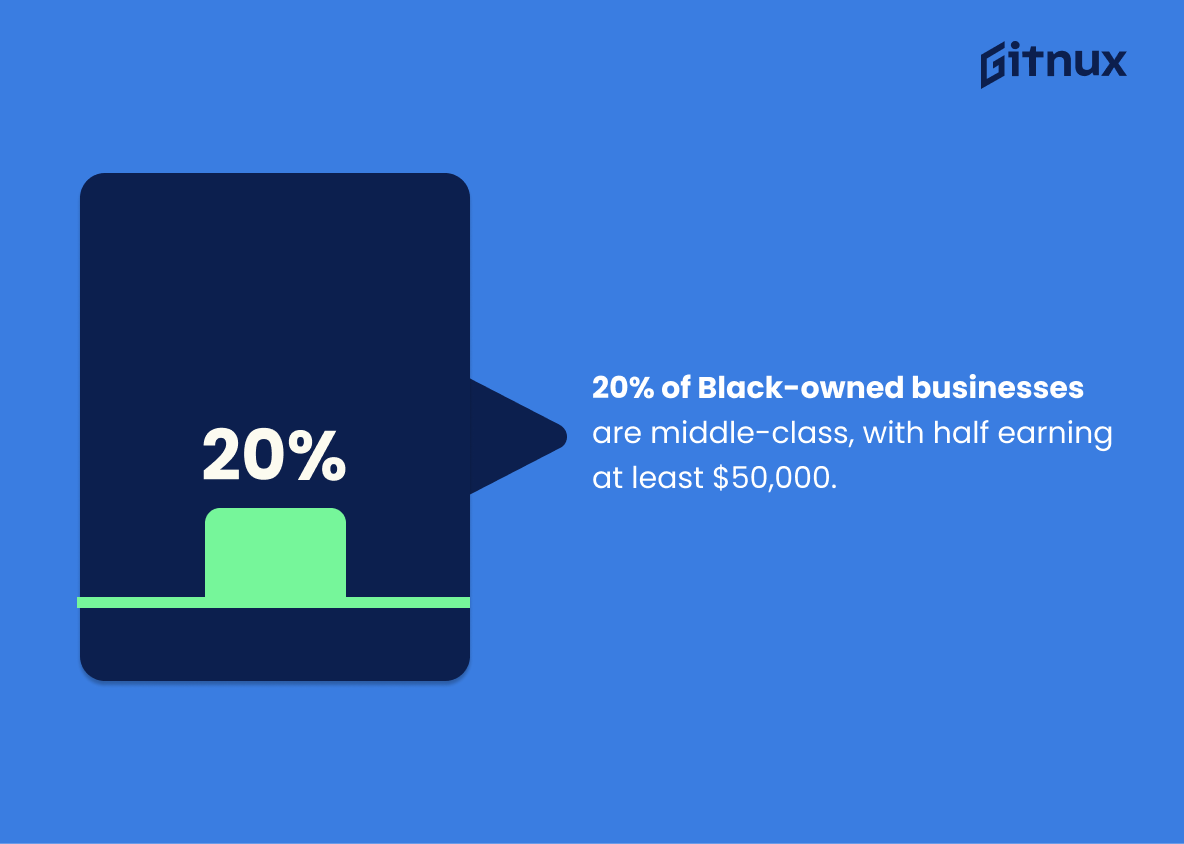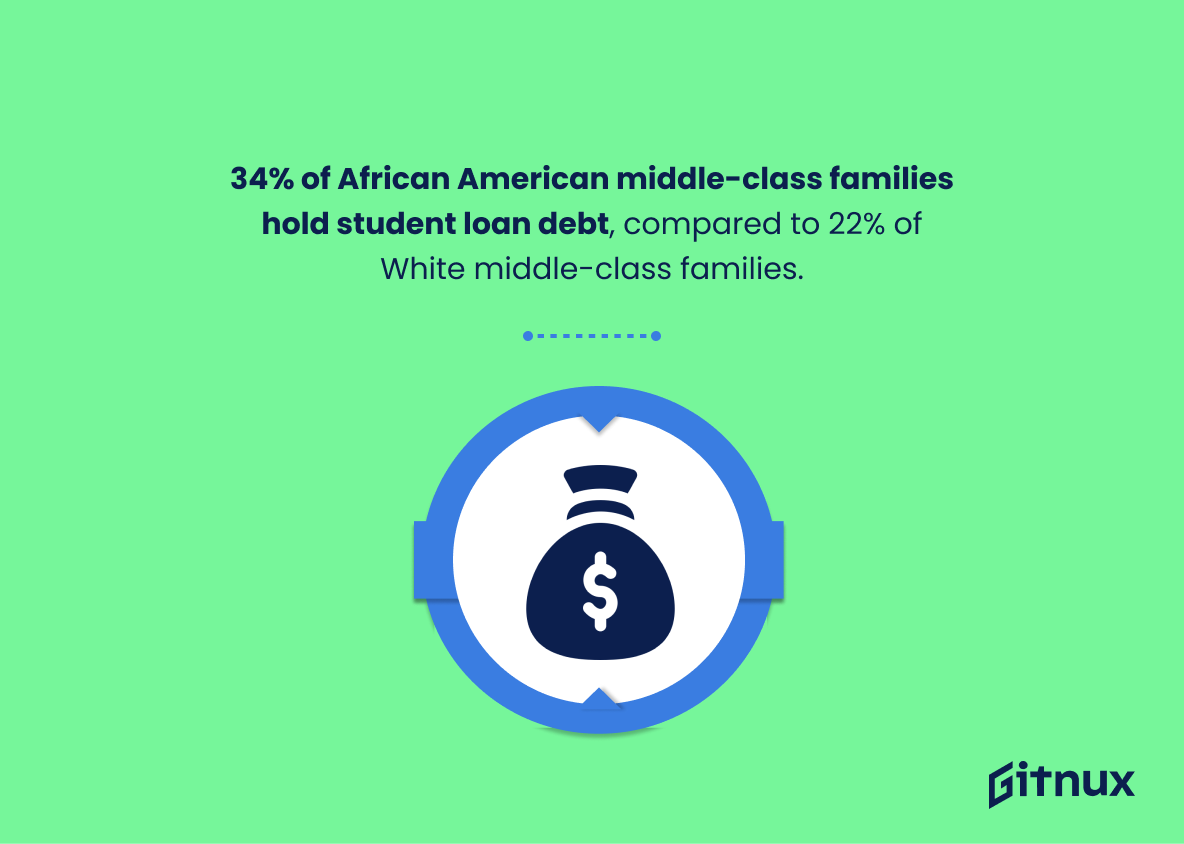The African American middle class is an important part of the U.S. economy, yet they face a number of challenges that can make it difficult to achieve financial stability and security. This blog post will explore some key statistics about the African American middle-class in order to gain insight into their economic situation and how it compares with other racial groups in America today.
We’ll look at median income levels, homeownership rates, wealth gaps between Black and White households, educational attainment among young adults, business ownership trends for women entrepreneurs, retirement savings disparities between races as well as student loan debt burdens faced by this population group. By understanding these facts we can better understand what needs to be done in order to ensure greater social mobility opportunities for all Americans regardless of race or ethnicity.
This statistic is a powerful indicator of the financial state of African American middle-class families in 2016. It provides a snapshot of the economic realities of this demographic, and serves as a reminder of the disparities that still exist between African American and other middle-class families. It is a stark reminder of the need for continued efforts to close the racial wealth gap and ensure economic justice for all.
About 42% of African American households fall in the middle-class income bracket.
This statistic is a powerful indicator of the progress African American households have made in achieving middle-class status. It speaks to the hard work and dedication of African American families to achieve financial stability and security. It also highlights the importance of providing resources and support to African American households to ensure they can continue to thrive and reach their full potential.
African American Middle Class Statistics Overview
Homeownership rates for middle-class African Americans is 49%, compared to 74% for middle-class whites.
This statistic is a stark reminder of the disparities that exist between African Americans and whites in terms of homeownership. It highlights the fact that African Americans are far less likely to own their own homes than their white counterparts, a disparity that has been perpetuated by systemic racism and discrimination. This statistic is an important indicator of the economic inequality that still exists in our society and should be addressed.
62% of middle-class African American children fall out of the middle class over a generation.
This statistic is a stark reminder of the systemic inequalities that African American families face in the United States. It highlights the fact that despite the progress made in recent decades, African American children are still disproportionately affected by poverty and lack of economic opportunity. This statistic serves as a call to action for policy makers and advocates to continue to fight for economic justice and equality for African American families.
On average, African American middle-class students experience a wealth gap of $33,348 compared to their White middle-class peers.
This statistic is a stark reminder of the systemic inequality that African American middle-class students face. It highlights the fact that, despite their hard work and dedication, they are still at a financial disadvantage compared to their White peers. This wealth gap is a tangible example of the disparities that exist in our society and serves as a call to action to address these issues.
In 2018, 21% of African American households had an annual income between $50,000 and $74,999.
This statistic is a telling indication of the African American middle class. It reveals that a significant portion of African American households have an annual income within the range of $50,000 to $74,999, which is indicative of a middle-class lifestyle. This statistic is important to consider when discussing the economic standing of African Americans in the United States.
Among African American middle-class families, 67% had at least one full-time working adult in 2019.
This statistic is a powerful indicator of the progress African American middle-class families have made in recent years. It shows that a majority of African American middle-class families have at least one full-time working adult, which is a sign of financial stability and security. This statistic is a testament to the hard work and dedication of African American middle-class families, and it is an important reminder of the progress that has been made in recent years.
In 2017, 27% of young Black adults (25 to 35 years) had a bachelor’s degree or more, compared to 36% in this age range for all other racial groups combined.
This statistic is a stark reminder of the disparities that exist between African American young adults and other racial groups when it comes to educational attainment. It highlights the need for greater access to higher education opportunities for African Americans, as well as the need for more resources to support their success in college. It also speaks to the importance of closing the racial wealth gap, as higher education is often a key factor in achieving economic stability.
8.7% of African American women-owned businesses belong to the middle class.
This statistic is a powerful indicator of the progress African American women have made in achieving economic success. It shows that despite the many challenges they face, African American women are still able to create and sustain businesses that can provide them with a middle-class lifestyle. This statistic is a testament to the resilience and determination of African American women, and it serves as an inspiration to others who are striving to achieve similar success.
African American middle-class families hold only about 4% of the total middle-class wealth.
This statistic is a stark reminder of the systemic inequality that African American middle-class families face. It highlights the fact that despite their hard work and dedication, they are still unable to accumulate the same level of wealth as their white counterparts. This statistic is a call to action to address the systemic racism that has created and perpetuated this disparity.
61% of African American middle-class families have no financial stock ownership.
This statistic is a stark reminder of the financial disparities that exist between African American middle-class families and other groups. It highlights the need for greater access to financial resources and opportunities for African American middle-class families, so that they can build wealth and secure their financial future.
African American middle-class families have only 60% of the homeownership rates of White middle-class families.
This statistic is a stark reminder of the systemic racism that African American middle-class families face in the United States. It highlights the fact that, despite having similar incomes, African American middle-class families are still unable to achieve the same level of homeownership as their White counterparts. This statistic is a powerful indicator of the disparities that exist in our society and serves as a call to action to address these issues.
African American families in the middle class have 42% less retirement wealth than White middle-class families on average.
This statistic is a stark reminder of the systemic inequality that African American families in the middle class face when it comes to retirement wealth. It highlights the need for greater access to resources and opportunities that can help bridge the gap between White and African American families in the middle class. This statistic is a call to action to ensure that African American families in the middle class have the same opportunities to build retirement wealth as their White counterparts.
The median net worth of African American middle-class households is $17,100, compared to $171,000 for White middle-class families.
This statistic serves as a stark reminder of the wealth gap between African American and White middle-class households. It highlights the fact that African American middle-class families have significantly less wealth than their White counterparts, and this disparity has far-reaching implications for economic security and opportunity.
20% of Black-owned businesses are considered part of the middle class, with half of these businesses having an income of at least $50,000.
This statistic is a powerful indicator of the progress African American businesses have made in achieving middle-class status. It shows that despite the many challenges they face, Black-owned businesses are succeeding in becoming financially secure and stable. This statistic is a testament to the hard work and dedication of African American entrepreneurs, and it serves as an inspiration to others who are striving to achieve the same level of success.
34% of African American middle-class families hold student loan debt, compared to 22% of White middle-class families.
This statistic is a stark reminder of the disparities that exist between African American and White middle-class families when it comes to student loan debt. It highlights the fact that African American middle-class families are more likely to be burdened with student loan debt than their White counterparts, a disparity that can have long-term implications for their financial security.
40% of employed African American middle-class workers are in occupations paying a median wage of $15 per hour or less.
This statistic is a stark reminder of the economic disparities that African American middle-class workers face. It highlights the fact that despite their hard work and dedication, many African American middle-class workers are still unable to access higher-paying jobs and are instead stuck in occupations that pay a median wage of $15 per hour or less. This statistic is a call to action to address the systemic racism and economic inequality that African American middle-class workers face.
The unemployment rate for African American middle-class workers was 6.6% in January 2019.
This statistic is a telling indication of the state of African American middle-class workers in January 2019. It provides a snapshot of the economic situation of this demographic, and can be used to compare to other months or years to gauge the progress or decline of African American middle-class workers. It is an important statistic to consider when discussing the economic standing of African American middle-class workers.
African American middle-class families are twice as likely to hold medical debt compared to White middle-class families.
This statistic is a stark reminder of the disparities that exist between African American and White middle-class families when it comes to medical debt. It highlights the fact that African American middle-class families are more likely to be burdened with medical debt, which can have a significant impact on their financial stability and well-being. This statistic is an important reminder of the need to address the systemic issues that lead to these disparities and to ensure that all families have access to quality healthcare.
27.5% of African American middle-class families live in neighborhoods with a majority of Black residents.
This statistic is a powerful indicator of the state of African American middle-class families in the United States. It speaks to the fact that, despite the progress made in terms of racial equality, African American middle-class families are still largely segregated from other racial groups. This segregation has a direct impact on the quality of life for African American middle-class families, as they are often denied access to the same resources and opportunities as their white counterparts.
This statistic is a reminder that there is still much work to be done in order to ensure that African American middle-class families have the same opportunities and access to resources as other racial groups.
Conclusion
The statistics presented in this blog post demonstrate the stark disparities between African American middle-class families and their White counterparts. Despite having a median income of $41,362 in 2016, only 42% of African American households fall into the middle-class bracket. Homeownership rates for these families are significantly lower than those for Whites (49% vs 74%), while wealth gaps remain wide ($33,348 on average). Furthermore, 62% of Black children born to middle-class parents will not stay within that same class over a generation due to educational attainment issues.
These figures also show how difficult it is for African Americans to build financial security: they have less retirement savings and stock ownership compared with whites; fewer women own businesses belonging to the middle class; medical debt is twice as likely among them; and 40 percent work in occupations paying low wages. All these factors contribute towards an overall lack of economic mobility which has been further exacerbated by COVID-19’s disproportionate impact on communities of color across America.
It is clear from these statistics that there remains much progress needed before true racial equity can be achieved when it comes to economic stability amongst all races – especially within the context of America’s growing Middle Class population.
References
0. – https://www.www.insightcced.org
1. – https://www.www.jointcenter.org
2. – https://www.www.urban.org
3. – https://www.www.bls.gov
4. – https://www.www.pewresearch.org
5. – https://www.www.pewsocialtrends.org
6. – https://www.www.americanprogress.org
7. – https://www.socialequity.duke.edu
8. – https://www.www.epi.org
9. – https://www.www.statista.com
10. – https://www.www.brookings.edu
